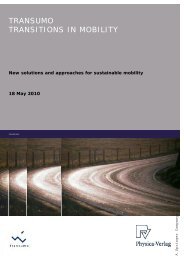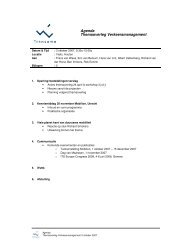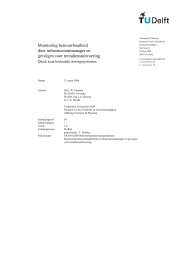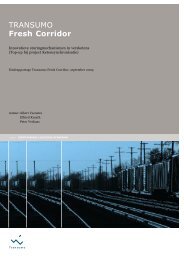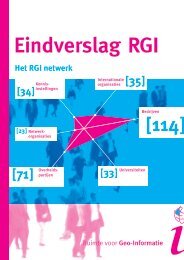Casestudie Breakdown prediction Contell PILOT - Transumo
Casestudie Breakdown prediction Contell PILOT - Transumo
Casestudie Breakdown prediction Contell PILOT - Transumo
You also want an ePaper? Increase the reach of your titles
YUMPU automatically turns print PDFs into web optimized ePapers that Google loves.
A classification could be achieved by calculating the probability of the actual<br />
situation, based on historical data. The underlying assumption is that a situation that<br />
is more exceptional than any other in the past indicates a critical situation of a<br />
hundred percent probability. If, for instance, a current door opening already takes<br />
more than one minute, a comparison to past values could conclude that ninety<br />
percent of all door openings took less time. Hence, the probability that the current<br />
situation is critical is ninety percent. To put this value on a larger basis, the maximum<br />
probability of all three criteria should be taken.<br />
The probability of a critical situation could be used to define the above suggested<br />
alarm levels:<br />
• Green alarm: probability of a critical situation ≥ 50%<br />
• Yellow alarm: probability of a critical situation ≥ 75%<br />
• Red alarm: probability of a critical situation ≥ 95%<br />
This definition is only used exemplarily and can be adapted to other values.<br />
Especially the made assumption that probabilities < 50% shall not be classified as<br />
alarms, although the critical temperature level is exceeded, might be problematic in<br />
some settings. But this assumption saves a lot of alarms without increasing the risk<br />
too much. 72<br />
Using classification like this offers the person in charge additional operational<br />
decision support, whether an occurring alarm has to be taken seriously or not.<br />
Section 6.2.3 will apply this method to a sample dataset to point out the possible<br />
improvements.<br />
5.10.4 Review<br />
The last three sections introduced promising ideas to improve the current monitoring<br />
situation. This section will now review the expected improvements. Whether these<br />
methods really lead to the expected gain of information will be reviewed in chapter 6<br />
by applying them to a sample dataset.<br />
Section 5.10.1 pointed out, that the appliance of descriptive statistics to monitoring<br />
data might be used to recognize significant changes of general cooling behavior on<br />
daily basis. Especially the analysis of daily nighttime values could recognize changes<br />
72 See section 6.2.3 for details<br />
83



